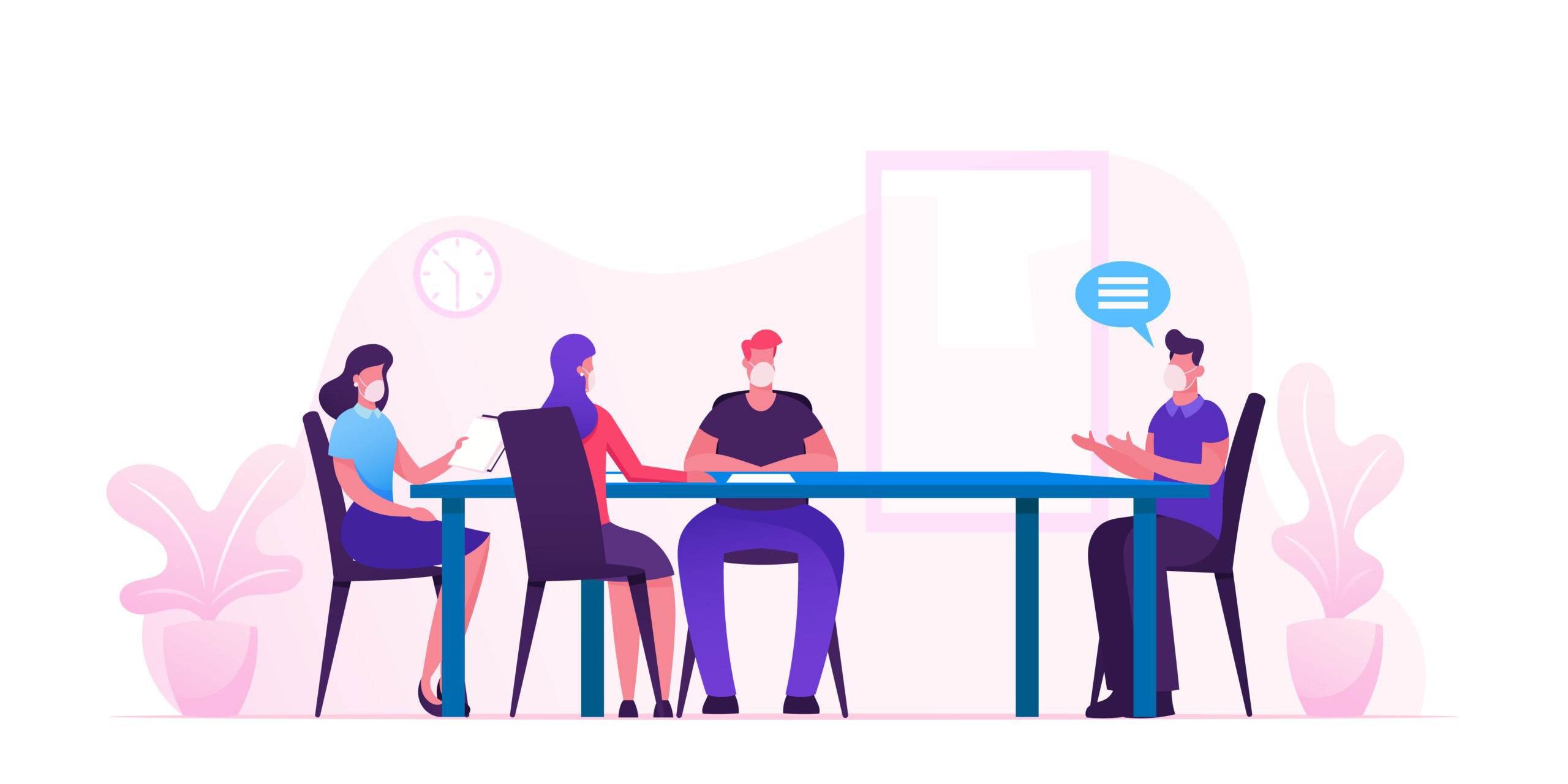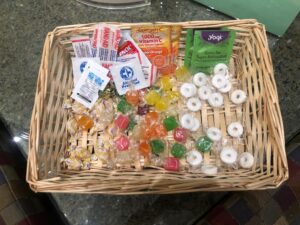BACK TO NORMAL? OBSERVATIONS ON A RETURN TO IN-PERSON QUAL RESEARCH

To echo what you’ve probably heard too many times already, the past 18 months have significantly disrupted the ways we interact and do business. In our niche little corner of marketing research, the height of the pandemic last year meant packing up, going home, and bringing our research online. We learned a lot about conducting qualitative research entirely online, and as a methodology it proved to have its strengths, limitations, and interesting quirks as more and more researchers and respondents were forced to adopt it.
This past summer, we had the opportunity to jump back into the field for in-person qual in the LA area right before the Delta variant brought cases back up there and in many parts of the country. It was something we were eager to do, having missed the unique experiences with respondents, clients, and facility staff that you only really get with in-person focus group research. It also gave us an opportunity to take a step back and, once again, observe what we were doing from a third-person methodological standpoint, and draw up some observations about what was different—or the same—this time around.
Here are some notes from the field that might help you think about your own research plans—whether to stay online or return to your favorite research facility.
- Reclaiming non-verbals. Our time back in the field underlined the fact that virtual conversations are quite different from ones that take place in person. Qualitative researchers by definition learn just as much from what the respondent is doing as we learn from what they are saying: tone, physical posture, non-verbal communication, facial expressions, group atmosphere can tell you a lot. When you’ve got a group of respondents sitting in a room together around the same table, these aspects come through much more clearly than when they are separated geographically and their interactions are mediated through a screen, speaker, and Wi-Fi connection.
- A different kind of screen share. When we share stimulus for testing (in this case, video clips), the in-person format allows us to provide a consistent experience for every respondent in all groups: a large screen, HD sound and sight experience. We might be able to optimize an online qualitative environment for high-definition AV, but we can never be sure of (or be able to control) how it is received by respondents in their individual homes. And getting respondents in a room together means leaving the barking dogs and background distractions at home.
- The backroom is back. For a big strategic qualitative project, where active client participation in the learning is integral (e.g., observing from an on-premises backroom, participating in live conversations before, during, between, and after groups), our experience this summer confirmed that in-person qual is the way to go. The nightly attendance by a core client team, the sheer number of observational post-it notes generated by the client in the back room, and the energy generated by in-person contact (especially between bites of catered meals) demonstrates that this has a special kind of value.
- Talking to your work neighbors. Similarly, we were reminded that while the purpose of research is to learn, for some organizations research can also have a secondary goal: to provide an occasion and catalyst for cross-functional communication within an organization. Colleagues who might not normally be together in the same room for any other reason, come together for the research, and have conversations they might not otherwise have.
- Eager to meet, eager to talk. Everyone this past summer—respondents and clients alike—seems to have been starving for social interaction. As a result, they spoke with fewer filters and were eager to connect with other people. Respondents were also much more likely to open up and tell more personal stories, sometimes only loosely related to the topic at hand. Focus groups here became somewhat more therapeutic than normal. And the backroom had an air of a reunion of sorts: colleagues seeing each other for the first time in months (or if new to the organization, for the first time ever) had an energizing effect that spilled over into research-relevant conversations and reflections.

- A new twist on snacking. Speaking of the backroom, the snacks were better than ever. One facility even thought to put together a “COVID care” basket complete with lozenges, Vitamin C packs, hydration capsules, and handwipes. Not your average candy bowl, but I couldn’t help notice people grabbing items from there to stowaway in their bags.
- To mask or not to mask? During what seemed like the tail end of the pandemic this summer, different communities and states had been updating public mandates and protocols at different paces and with different degrees of risk aversion. As we traveled from Encino to Beverly Hills and then on to Irvine, it was a bit of a scramble to fully account for which facility was instituting which policies with regards to mask policies, distancing, and room capacity. Who masked and who didn’t was never a point of contention in the groups. While it did occasionally lead to an awkward first couple of minutes trying to navigate the best way forward for the group, it was actually less of an obstacle than anticipated. Sometimes it helped the moderator build rapport, and became a point of humor when everyone in a group confirmed their vaccination status and happily de-masked. So if you’re wondering “what’s the point of in-person qual if everyone has to wear a mask?”, I think the short answer is “you’ll figure it out.”
The past 18 months taught us that online focus groups deserve consideration on its own merits as a legitimate modality; it should be employed for research not because there’s no other option, but because there are things that online qual is truly better suited for.
Still, the time during the pandemic when in-person research was not possible helped to clarify what it is that in-person qualitative provides uniquely that online qual can’t simulate.
To borrow from Joni Mitchell: you don’t know what you got till it’s gone.
Researchers will and should continue to recommend in-person qual when they’re trying to accomplish certain things: control the research environment, account for non-verbals as data-points, foster organizational buy-in and collaboration. And they will opt for online qual when there are other priorities: achieving a geographically broad sample while economizing on travel costs, or reaching people who might otherwise be more difficult to reach if travel to a research facility is required. Either way, the experiences of the last 18 months have clarified for us the unique attributes of each modality, and can help us be a little bit more intentional about the decision going forward.
